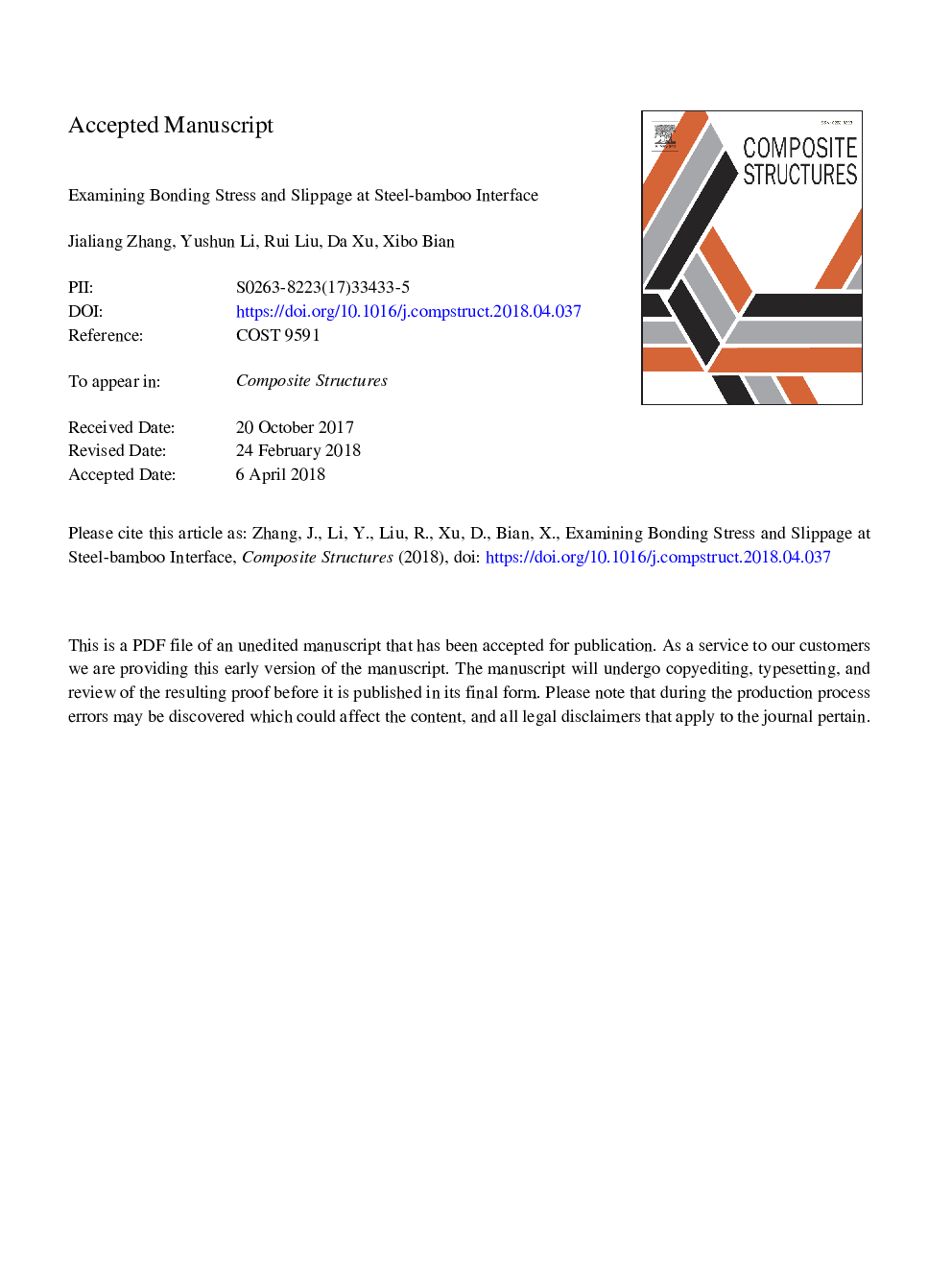| Article ID | Journal | Published Year | Pages | File Type |
|---|---|---|---|---|
| 6703672 | Composite Structures | 2018 | 62 Pages |
Abstract
Well bonded steel-bamboo interface guarantees the integrity and load bearing capacity of the steel-bamboo composite structure. To investigate the bond stress and slip of steel-bamboo interface and simulate the actual working condition, push-out tests were completed under short-term and long-term loading conditions. Two types of bonding interfaces are proposed: the pure adhesive bonding interface, and the reinforced bonding interface which is bonded by structural adhesive and strengthened by the self-tapping screws. With interface type, long-term loading ratio and long-term loading duration as main parameters, 33 specimens are divided into 5 groups. Based on equilibrium equations of a differential element from the bamboo panel, and constitutive relationship of the structural adhesive, a theoretical model was proposed to determine the bonding shear stresses and slippages at the interfaces of steel-bamboo. The maximum bonding shear stress of pure adhesive bonding specimens is determined as 1.64â¯MPa in the short-term loading test, which reduces 10% and 20% in the long-term loading test. Meanwhile, no reductions occur in the reinforced bonding specimens. The load bearing capacities of the two types of interfaces determined theoretically match well with the lab testing results. The differences between the theoretical and the lab testing values are less than 8%.
Keywords
Related Topics
Physical Sciences and Engineering
Engineering
Civil and Structural Engineering
Authors
Jialiang Zhang, Yushun Li, Rui Liu, Da Xu, Xibo Bian,
